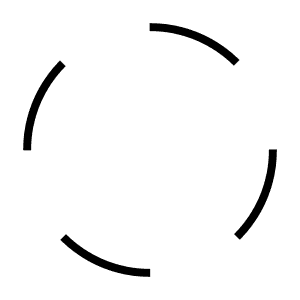Artist's statement:
"I met Jonas Frickas in 1999 when he opened for my band at a show in Gainesville FL. He was the first person I ever saw get an entire room full of kids moving, using only a single mic and loop pedal. Our orbits occasionally intersected over the decades of DIY until in recent years we both settled in the Northeast. During covid, our lives became interconnected more as my queer upstate NY community members began to visit and organize with the rural land project where Jonas lived outside of Brattleboro. In August 2022, Jonas invited me to play a benefit for Defend The Atlanta Forest at The Buoyant Heart, a DIY space in Brattleboro. There, I met activists from Atlanta who would later host me for an incredible show in the Welaunee Forest in fall 2022. Inspired by the forest and the queer/trans activists who had come to defend it and to Stop Cop City in spring 2023, I made an entire record, Sympoiesis, dedicated to the forest. In March 2023, two days before the record's release, Jonas died mysteriously on stage immediately after playing a show in Tallahassee FL, the same night that the police raided the Atlanta Forest and charged dozens of innocent attendees of a dance party with domestic terrorism. Later that year, I found myself returning to Brattleboro to play a memorial for Jonas. I find myself writing here all around a grief that I have not yet processed or come to terms with: Jonas' absence from this text, now from our lives. But his memorial—which took place in two venues to accommodate the enormous crowd—drew hundreds of people from the entire town of Brattleboro and from DIY art and music communities around the USA and was the top story in the local newspaper that day. Afterwards, I lingered in town for several extra days, feeling kind of aimless and crazy. My friend who I had intended to visit took ill from the stress and grief of the memorial so I stayed instead at the eerie Colonial Motel on Route 5, unsure of why I remained in town but unable to pull it together to leave and return home. There, in the seductive desuetude of Room 210, I often found myself slipping into a kind of fugue state, losing many minutes of the hour, staring at a painting that hung on the wall. The painting depicted a white bench that appeared to glow softly within a virgin forest in Autumn. It occurs to me now that I do not know if this painting hung only in my room or is a feature of the motel and is in every room. To have something to do while I waited to see if my friend would get well, I arranged to record in the studio Jonas had built at the Birge Street warehouse space. For two nights I played for Jonas in his old room during the Full Moon. These tracks were the first two takes on the first night. After the second night, I finally felt like I could leave and go home. RIP dear Jonas Frickas." - Erica Dawn LyleErica Dawn Lyle has been described by Pitchfork as a “punk hero,” which, though true, feels like an insufficiently specific term to describe her multifaceted presence and work. Colonial Motels is in fact rawly personal, a ladder out of an abyss of mourning as well as a determination to persevere and connect. Playing less but achieving more, this album captures the engaging intensity and directness that defines Lyle’s art, performance, and activism.
Part I builds on patient looping and guitar body play, then gradually disintegrates into a gale of analog and digital noise stabbed with howling guitar calls. A blaring coda strips the electric guitar down to the primes before an abrupt end. Part II starts intense and cathartic, and stays that way, a heavily textured sonic wall which slowly undulates like an animated topographical map simultaneously receding and growing.
The pieces seem to encourage a listening level that could be described as provocative, and Lyle’s guitar contains elements of squallish noise, employing to its advantage the overload of all apparatuses involved. But it also contains a masterful degree of space in which to catch the hypnotic repetition of desert blues, subtly weird pedal experimentation, unselfconscious playfulness, and aural hallucinations. Astonishingly, these pieces feel meditatively paced even as they reach peak intensity, enabling the listener to briefly rest in contemplation while in the eye of a storm about which most guitarists can only cower or fantasize.
---
Erica Dawn Lyle - electric guitarRecorded by EDL, Aug 1 2023 at The Buoyant Heart, Birge Street, Brattleboro VTimprovised, single takes
---
Mastered by Grant RichardsonPhotograph by EDLLayout by E. Lindorff-ElleryPrinted by Small Fires Press


















